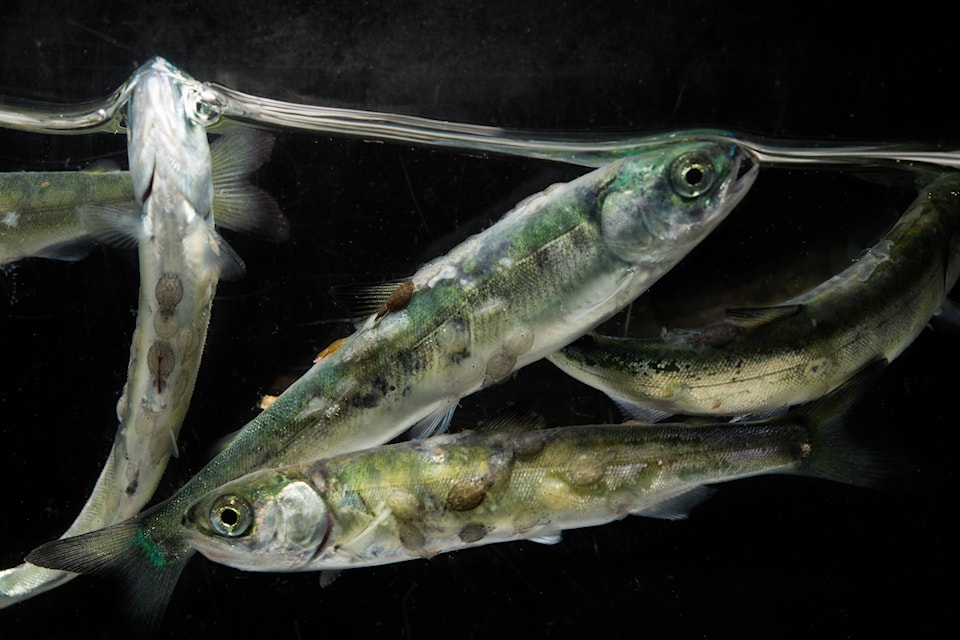B.C.ÔÇÖs First Nations Leadership Council (FNLC) is calling for an immediate end to marine-based salmon farming in the province, following reports by B.C. fish farm owners that show 37 per cent of facilities, or 19 farms across the province, exceed government sea lice limits.
The FNLC also point to a recent study by marine biologist Alexandra Morton that show high numbers of juvenile wild salmon migrating through southern B.C. waters were infected with the lethal parasite. The council now wants the federal government to fast-track its promise to end open-net farming by 2025.
ÔÇ£No more excuses, distractions, or delays ÔÇö open-net fish farms are decimating wild salmon populations and First NationsÔÇÖ ways of life are on the line,ÔÇØ Sumas First Nation Chief and Union of BC Indian Chiefs Fisheries Representative Dalton Silver said. ÔÇ£We need a collaborative, cooperative transition to land-based containment with First Nations leading in order to conserve and protect the species vital to our communities.ÔÇØ
The Cohen Commission Report in 2012, which investigated the 2009 collapse of Fraser River sockeye runs, found sea lice from open-net farms contributed to salmon mortality and recommended an end to the practice by September of this year if the risks exceeded minimal thresholds. The federal government adopted that recommendation in its mandate but pushed the deadline to 2025.
Robert Phillips, First Nations Summit Political Executive, said delaying an end to marine-based salmon farming contradicts the federal governmentÔÇÖs commitment to the UN Declaration on the Rights of Indigenous Peoples, and the provinceÔÇÖs Declaration on the Rights of Indigenous Peoples Act.
ÔÇ£We believe this has to change,ÔÇØ he said. ÔÇ£B.C. and Canada have to act immediately, and if not the impact to our food security is [under] immediate threat.ÔÇØ
READ MORE:
A report shared with the FNLC by marine biologist Alexandra Morton, an outspoken critic of open-net salmon farms, showed sea lice infection rates exceeded limits in all but one area, the Broughton Archipelago. Here, 34 per cent of sampled fish were infected with the lowest number of sea lice, but also in an area were five farms have been decommissioned as part of a four-year provincial program to transition away from marine-based salmon farms. Areas exceeding limits are Clayoquot Sound (72 per cent infected), Nootka Sound (87 per cent infected ) and Discovery Islands (94 per cent infected).
In an emailed statement John Paul Fraser, executive director for the BC Salmon Farmers Association, said the majority of salmon farming operations is done under agreements with First Nations, and the association will begin a dialogue with leaders on the issues raised.
READ MORE:
ÔÇ£We share their passion and concern about the health of wild salmon, and the belief that good science on that front is critical. We understand that management of sea lice is an ongoing concern. As an industry we are committed to adopting the newest technologies and processes to be better stewards of the environment. BCÔÇÖs wild salmon is important to all of us and we will begin our outreach today.ÔÇØ
Salmon stocks have steadily declined at rates alarming to all stakeholders and interest groups. A variety of contributing factors, separate from sea lice, include over-fishing, climate change, sediment from industrial forestry and natural disasters such as the 2019 Big Bar Slide.




